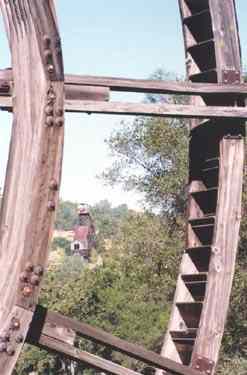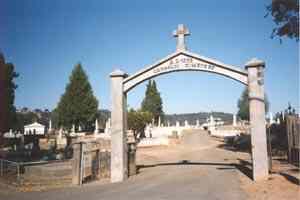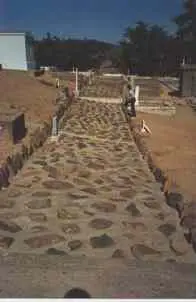JACKSON
|
JACKSON |
|
|
|
|
NAME:
Jackson COUNTY: Amador ROADS: 2WD GRID #(see map): 3 CLIMATE: Warm winter, mild summer BEST TIME TO VISIT: Anytime. |
COMMENTS:
On Highway 49, Semi-ghost. REMAINS: Many original buildings and tourist attractions. |
|
The future location of the town of Jackson was strategic for travelers between Sacramento and the mines to the south. A spring of good water at the site afforded travelers a place where they could camp for the night. A settlement grew up around the locality and is now the site of the National Hotel in Jackson. The town was named after a Colonel Alden Jackson who was the most frequent visitor to the overnight stop. The colonel subsequently moved on to found the town of Jacksonville further to the south. There were a number of smaller communities surrounding Jackson. As placer mining began to fade in these smaller towns, several deep quartz veins were found near Jackson. These produced the Argonaut Mine. Discovered in the 1850s, it became one of the deepest in the world. By 1930, it had a depth of 6,300 feet and had produced over $17,000,000. Jackson, not to be confused with Jacksonville, can be found on highway 49, north of Sonora and south of El Dorado. Submitted by Henry Chenoweth. Both towns are located south of Sutter Creek with Jackson on the north side of the Mokelumne Hill River and the town of Mokelumne Hill on the south side of the river. Mok Hill as it was called, got its start in 1848 and flourished. Jackson got its start in 1849 and flourished when gold was discovered along Jackson Creek. In a sense, they were twin cities born to feud and feud they did first over which would be county seat. Such was the riotous spirit of Mok Hill and Jackson in the Golden Fifties. Tempers have cooled since then and Mok Hill today is a quaint but quiet town on Highway 49. Jackson outpaced its rival and today is one of the busiest towns in the Mother Lode. But much of the early days can still be seen in both towns.  Kennedy Mine and wheel Courtesy Dolores Steele  St. Sava's Serbian Orthodox Church - 1894 Courtesy Dolores Steele  Cemetery Courtesy Dolores Steele  Cemetery Courtesy Dolores Steele  Cemetery Courtesy Dolores Steele  Miners graves In 1922 , 47 men were trapped below the surface by fire. Frantic resue operations, lasting for three weeks, were conducted through the connecting tunnels of the Kennedy Mine. When the miners were located, all were dead. A carbide lamp had been used to write a grisly finis: "gas too strong ---3 a.m." Courtesy Dolores Steele |
|
|---|
|
|